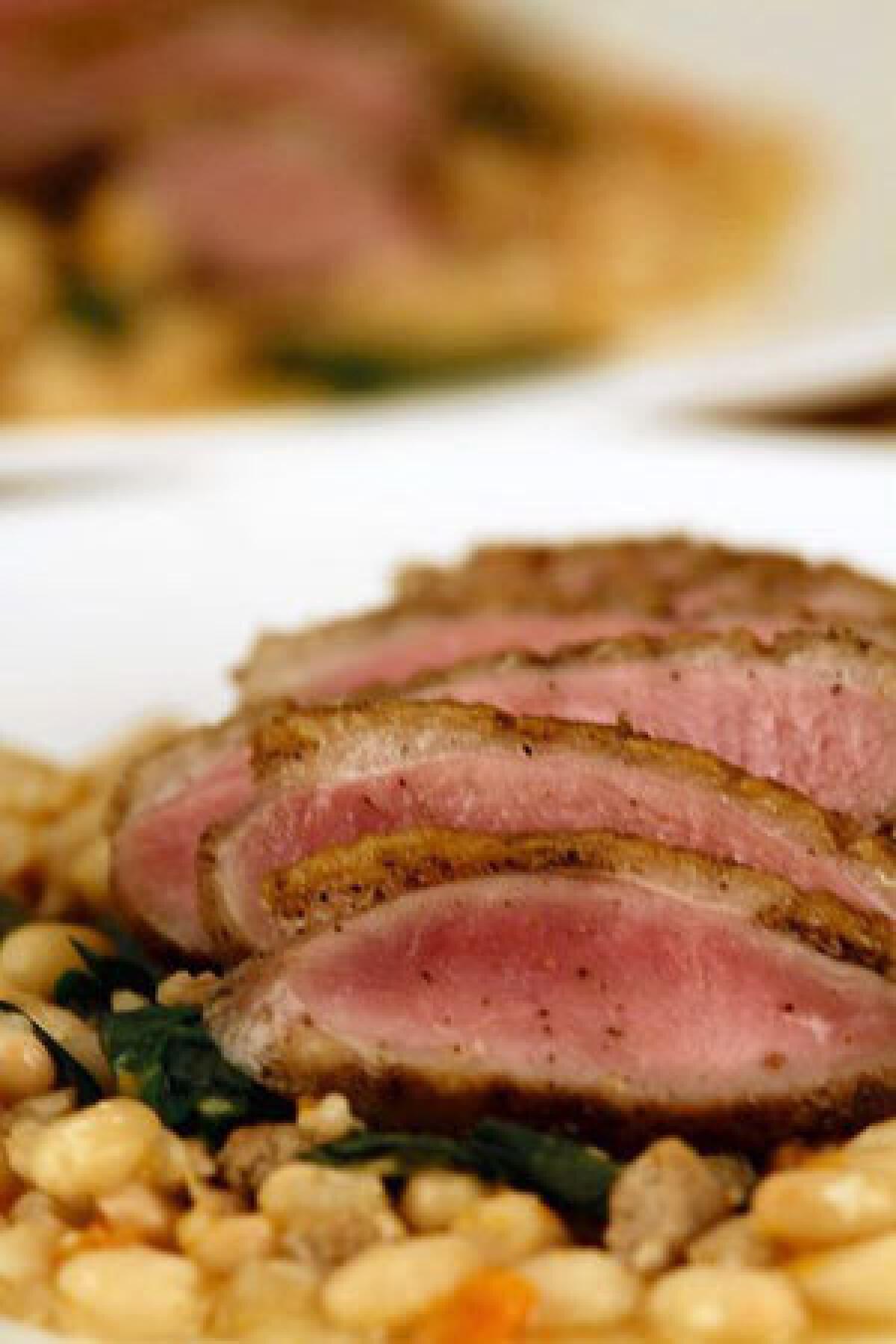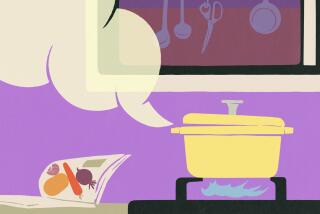California Cook: Finally — it’s bean season

Some people mark the start of fall with an apple pie. Others start breaking out the big reds from their wine cellars. Me? I’m a bean boy.
All it takes is the first sign of a nip in the air or the first morning that smells like ocean rain and I drag my Dutch oven out of the cupboard and start a big pot of beans simmering.
It doesn’t really matter that I know the next day may be back up in the 90s. In fact, that uncertainty even makes it a little sweeter.
That week of rain we had at the end of September? A Portuguese-style stew of white beans with shrimp and clams, given a final lift by chopped pickled peppers.
A week or so later, after the 100-degree temperatures had lifted? White beans braised with dandelion greens and served as a bed for crisp-skinned duck breasts (the leftovers, without the duck, were just as good a couple of nights later, with a few tablespoons of grated Parmigiano-Reggiano stirred in).
I’m not sure what it is I like best about beans — whether it’s the eating of them (so rich, so delicious, so complementary to other flavors) or the preparation. It’s involved cooking, but not so much that it demands an entire afternoon.
They’re perfect for a lazy fall day: Chop some vegetables, stew them in oil, add the beans, add water, bring to a simmer, cover and bake until tender.
Now, if you were reading carefully, you’ll notice that there was one step I left out — one that almost every other bean recipe tells you is a necessity. Most of the time, I don’t soak my beans before cooking them.
I learned this many years ago. Ironically, I was looking for a shortcut for soaking, because as much as I love beans, I can never seem to think ahead enough to start preparing them the night before. So I investigated various quick-soaks and even tried soaking a big batch of beans and then freezing it.
But the more I investigated, the more I asked: Why soak beans at all? In fact, in Mexico, where beans are a staple, home cooks almost never soak them. So why do we?
I talked to everyone from Mexican cooking maven Diana Kennedy to a scientist who studied beans and their cookery (yes, such scientists do exist), and then I set myself up for a big trial. One day when I was sure to be home alone, I cooked up a batch of unsoaked beans and ate them. Then I sat patiently, waiting for disaster. But nothing happened.
Actually, I prepared three batches of beans that afternoon. Besides the unsoaked, I fixed a batch that had been traditionally pre-soaked and another that had been quick-soaked (bring to a boil, sit for an hour, then cook).
Comparing the three was what finally converted me. Not only were the unsoaked beans safe (and convenient!), they were utterly delicious, so much richer and more flavorful than the soaked beans that there was no mistaking them.
What’s going on? Here’s the short version: Soaking dried beans does nothing for flavor or digestibility. The one thing it does is cut down on the cooking time, but just how much depends on how old and dried out the beans are.
Let’s take those one at a time.
Part of the cooking process with dried beans is rehydrating them — having them absorb enough water that they soften. The drier the bean, the longer this will take. Soaking jump-starts this process.
In the best-case scenario, if you buy your beans from a store that sells a lot of them so the stock is fresh, soaking will save you 40 to 50 minutes — but remember, that’s unattended cooking time, while the beans are bubbling merrily away in the oven.
In the worst case, with old, dried-out beans, soaking could save a whole lot more time. I’ve got a bag of pinquitos in my cupboard that I bought on impulse at Corti Brothers in Sacramento several years ago. When I finally get around to cooking those, I’ll definitely soak them first.
The type of bean matters too. Lentils and split peas, for example, cook so quickly they never need soaking. Chickpeas, on the other hand, are so tough that I wouldn’t dream of cooking them without soaking first.
As for flavor and texture, to me, there is no comparison. Having cooked soaked and unsoaked side-by-side multiple times, I can’t find any difference in the number of split or broken beans.
Where I do find a huge difference is taste: To me, beans cooked without soaking are much deeper and richer in flavor. Part of this is the broth, which is thicker and much more flavorful. But the broth is so thick it can be a bit “clingy.” So when I’m cooking beans for a stew-type dish (which I usually am), I don’t soak. But if I’m making something like a bean salad, where I want the beans to be separate, that thinner broth is an advantage.
And now, for the most delicate matter. Those well-known digestive difficulties inspired by beans happen in large part because they contain certain complex sugars (called oligosaccharides); the small intestine doesn’t produce the enzymes to break these down. These sugars pass undigested through the gut and stimulate shock and awe when they meet bacteria in the lower intestine.
When people tell you that soaking reduces flatulence, they’re operating under the mistaken assumption that the bean leaks those sugars into the water. But that doesn’t make much sense when you think about it. Those sugars are the food the bean plant will need to sprout. Releasing them all before the plant has had a chance even to germinate would be self-defeating. A recent paper found that you have to soak the beans for three days to get a significant reduction in sugars — and by that time the beans are almost sprouting.
The good news is that you can buy enzyme replacements at the grocery store — Beano — which will reduce the unpleasantness.
There’s another reason for beans’ noisy reputation, and that is that they’re really high in fiber, something that the normal American diet is very low in. This is certainly good for your long-term health but maybe not so great for your short-term social prospects.
Fortunately, the cure for this part of beans’ social awkwardness is easy: eat more beans.
And with the cool, wet season drawing near and the smell of autumn in the air, that shouldn’t be a problem.
More to Read
Eat your way across L.A.
Get our weekly Tasting Notes newsletter for reviews, news and more.
You may occasionally receive promotional content from the Los Angeles Times.







